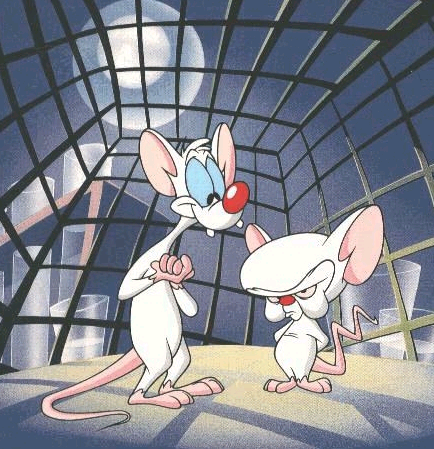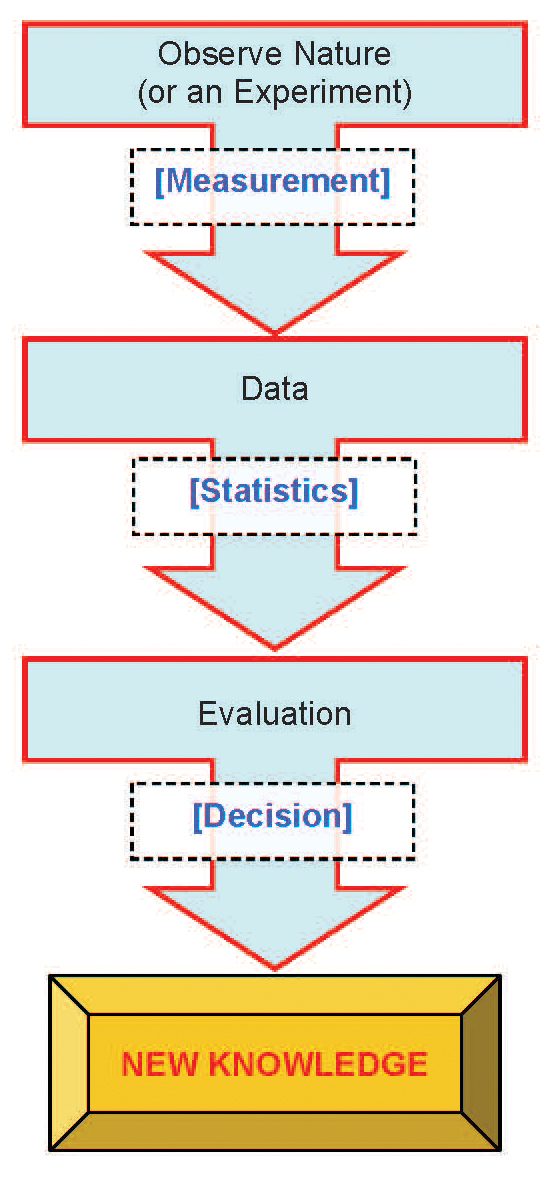PEP 6305 Measurement in
Health & Physical Education
Topic 1: Science,
Measurement, & Statistics
Section 1.1
n
This Topic has 3 Sections.
n
PLEASE NOTE:
Throughout the course, text that appears
underlined in blue is
a "clickable" link, to a
pop-up message,
interactive
files or examples, an outside
Web page, or another Topic in this course, such as
Correlation. These links contain definitions, problems to work,
examples, and links back to previous Topics if you need further information or a reminder.

Reading for Topic 1 (Please read the book
before reviewing the online course notes for each topic)
n
Vincent & Weir, Statistics in Kinesiology 4th ed., Chapter 1:
“Measurement, Statistics, and Research”
¨
Please note the list of key symbols in the beginning of the
book and the glossary in the back of the book; refer to these as needed
throughout the course.
Purpose of Topic 1
n
To introduce the terminology and basic concepts necessary to
understand the material in the rest of the course.
Measurement in
Science: Some Terminology and Definitions
What is Science?
n
The systematic and controlled collection and evaluation of
information for the purpose of increasing knowledge.
¨
When done properly, science can predict what will occur under
certain conditions.
¨
The ability to predict things gives us some degree of control over our
environment.
¨
A scientific approach is useful for other things also, such as designing
fitness programs, evaluating performance, evaluating programs, etc.
n
In health and exercise science, we evaluate and predict the effects of
muscular movement, nutrition, physiology, and other influences on human health.
¨
Example: With our current knowledge, we can
predict how resistance exercise will affect strength, power, and bone mass.
¨
What are you interested in evaluating and
predicting?
n
Scientific evaluation requires a process by which to collect and organize
information.
¨
This process is called measurement.
What
is Measurement?

n
The process of comparing a value to a standard.
¨
Note that measurement
is a process, not a result: the result of the process of measurement is called a
measure.
¨
A standard is a system for quantifying some property or
characteristic.
¨
A standard can be a unit of measurement.
n
Example: 1 cm is a standard for quantifying length; the
length
of an object can be compared to this known amount of length to quantify the size
of the object.
¨
A standard can also be a known range of values for a property or
characteristic.
n
Example: The distribution of GRE scores is a standard
by which to quantify student quantitative and verbal abilities relative to other students.
n
Information (usually numerical values) collected during
systematic observation.
¨
Data result from measurement.
¨
NOTE:
The word data is plural; thus, "The data are valid",
not "The data is valid".
Evaluation
n
Determining the worth or value of information in order to
make a judgment
or decision.
n
Measurement and evaluation are thus related, but not identical.
¨
Measurement
produces
data.
¨
Evaluation
uses data
to
make decisions.
Statistics
n
Using mathematical techniques to organize, summarize, and test
data.
¨
Statistics compare what happened in an experiment to what was
expected to happen.
¨
This comparison is called a statistical test.

n
Statistics require precise data.
¨
Bad (imprecise) data cannot provide good scientific results.
¨
Garbage in = garbage out.
¨
Precise data depend on good measurement.
n
Precise measurement = precise data.
n
We will review statistical principles and applications in the first two-thirds
of this course.
So, science can be
seen as using a set of processes to increase knowledge:

Properties of Good
Measurement (Good Data)
¨
The appropriateness of a measure for its intended use.
n
Reliability
¨
Consistency and stability of data.
¨
An indicator of whether a measure or score be the same when
measured at different times or in
different conditions.
n
Objectivity
¨
Consistency and stability of raters; the reliability of
a set of raters.
¨
An indicator of whether a rater is biased
(unfair) compared to other raters.
n
A measure must be reliable to be valid.
¨
If a measure is unstable
or imprecise (unreliable), the measure cannot be appropriate (valid) for any
purpose.
n
A measure must be objective to be reliable.
¨
If raters are
biased (unfair), then the measures they produce cannot be stable or precise
(reliable).
n
We will review each of these properties in more detail in the last third of the
course.
Measurement Involves
Four Steps:
1.
Define the object of measurement and the characteristic or property of
the object that is being measured.
2.
Define the standard to which the object will be compared.
3.
Compare the object to the standard.
4.
Quantify the relation of the object to the standard.
Example: Suppose we want to measure someone’s height.
¨
The object of measurement is the person. The
characteristic of the person being evaluated is height (i.e., the length of
their body).
¨
The standard to which the person will be compared is
centimeters (cm), an known quantity of length.
¨
We compare the person to a cm and
find the length of the person’s body is 180 times bigger than a cm.
¨
We conclude that the quantity of the person’s height is 180 cm.
Formative
Evaluation
Many
Sections will include some review questions about the material presented. You are
not required to turn these in, but I highly recommend you work through them to
ensure you have mastered the content. I also suggest that you review the
problems at the end of each chapter—the answers to those are in Appendix C
of the text.
n
Why is measurement important?
n
Describe the properties of good measurement.
n
Give your own example of the four steps of measurement.
What is the object of measurement? What is the standard? How is the object
compared to the standard? How is the relation quantified?
 Click to go to the
next section (Section 1.2)
Click to go to the
next section (Section 1.2)









